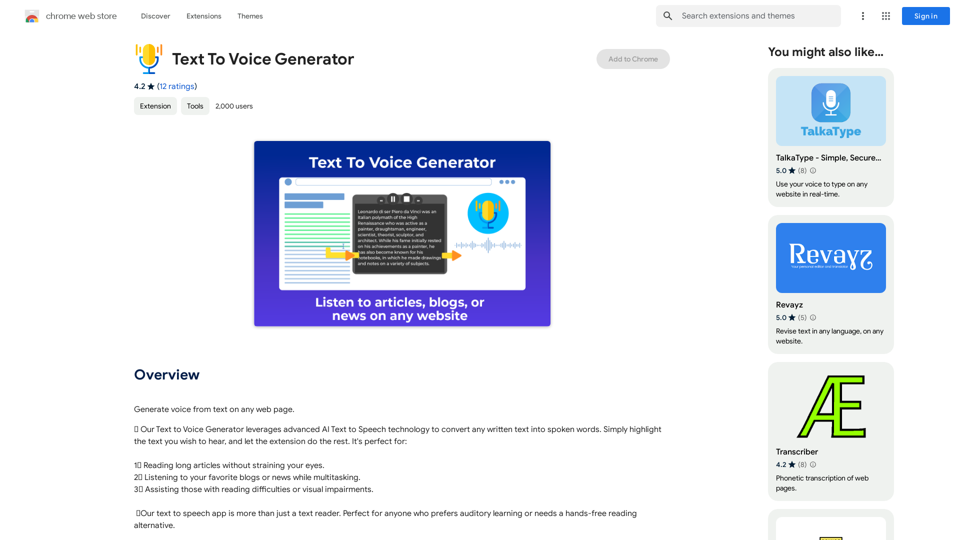Monatliche Besuche
193.90 M
Absprungrate
56.27%
Seiten pro Besuch
2.71
Verweildauer auf der Website(s)
115.91
Weltweites Ranking
-
Länderranking
-
Text-To-Sprache-Generator
Erzeuge eine Stimme aus Text auf jeder Webseite.

Neueste Verkehrsdaten
Aktuelle Besuche
Verkehrsquellen
- Soziale Medien:0.48%
- Bezahlte Überweisungen:0.55%
- E-Mail:0.15%
- Überweisungen:12.81%
- Suchmaschinen:16.21%
- Direkt:69.81%
Top-Suchbegriffe
| Suchbegriff | Verkehrswert | Suchvolumen | Kosten pro Klick |
|---|
Länderrangliste
| Land | Besuchsverhältnis |
|---|---|
| United States | 17.22% |
| India | 9.80% |
| Russia | 7.20% |
| Brazil | 6.71% |
| Japan | 3.04% |